Abstract
CENTA is a newly synthesized, beta-lactamase-labile, chromogenic cephalosporin reagent which changes color from light yellow (lambda maximum ca. 340 nm) to chrome yellow (lambda maximum ca. 405 nm) concomitant with hydrolysis of the beta-lactam ring. This compound offers promise as a diagnostic reagent comparable to other chromogens (PADAC and nitrocefin) for the early detection of beta-lactamase-producing clinical isolates, while retaining some antimicrobial effect against Escherichia coli, Klebsiella spp., Proteus mirabilis, Staphylococcus aureus, and non-enterococcal Streptococcus spp. CENTA is relatively unaffected by commonly used microbiological media and human serum.
Full text
PDF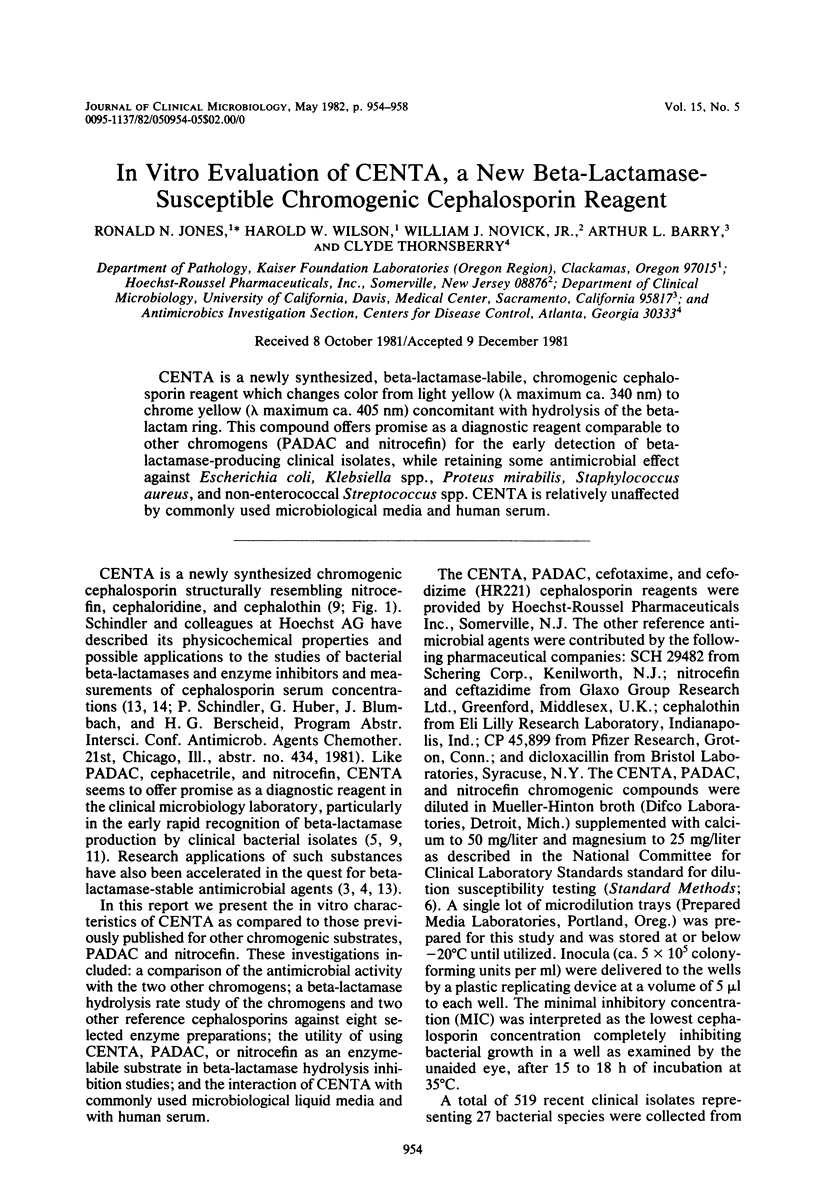
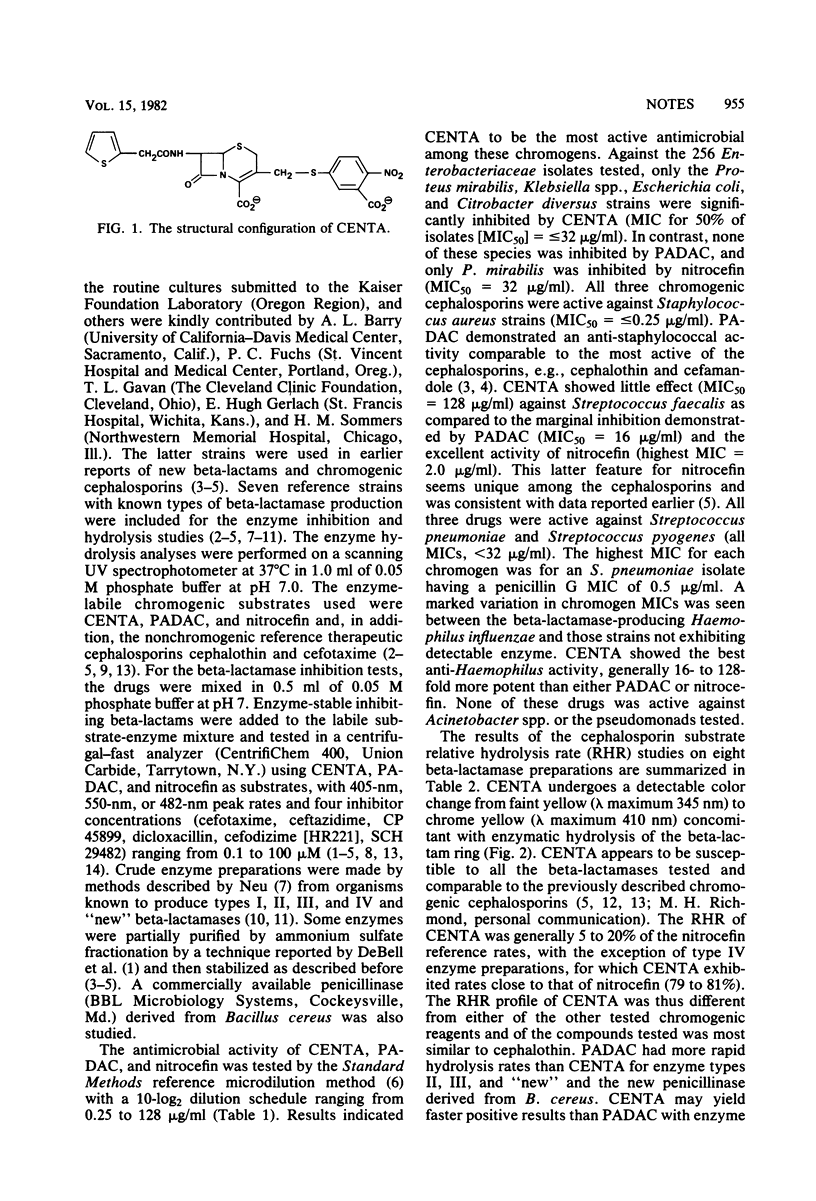
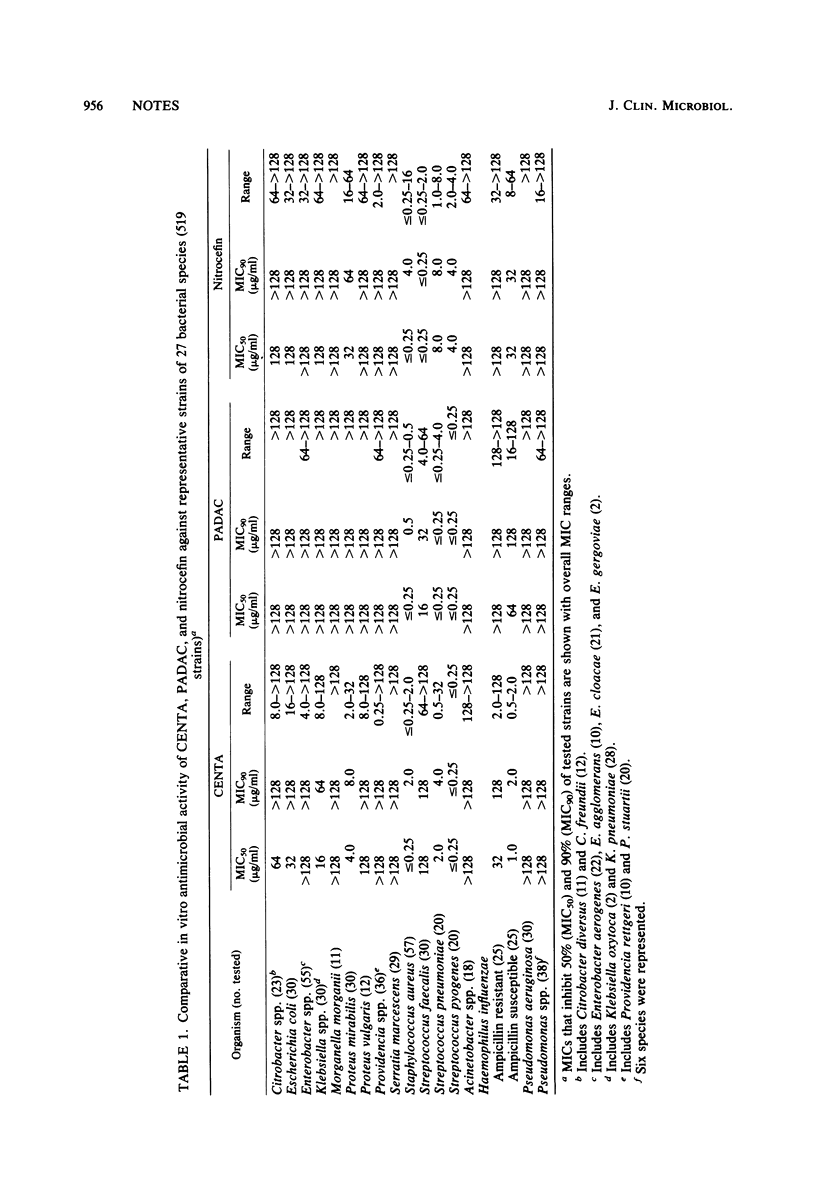
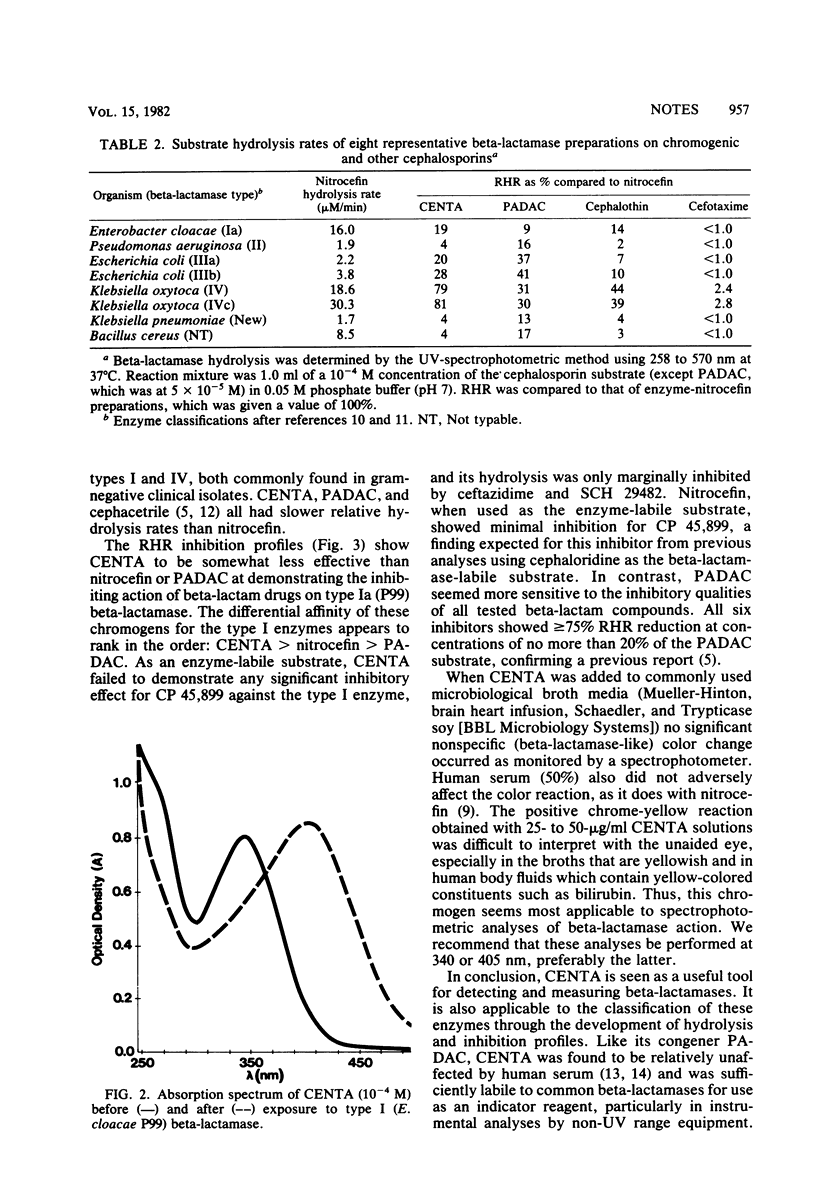
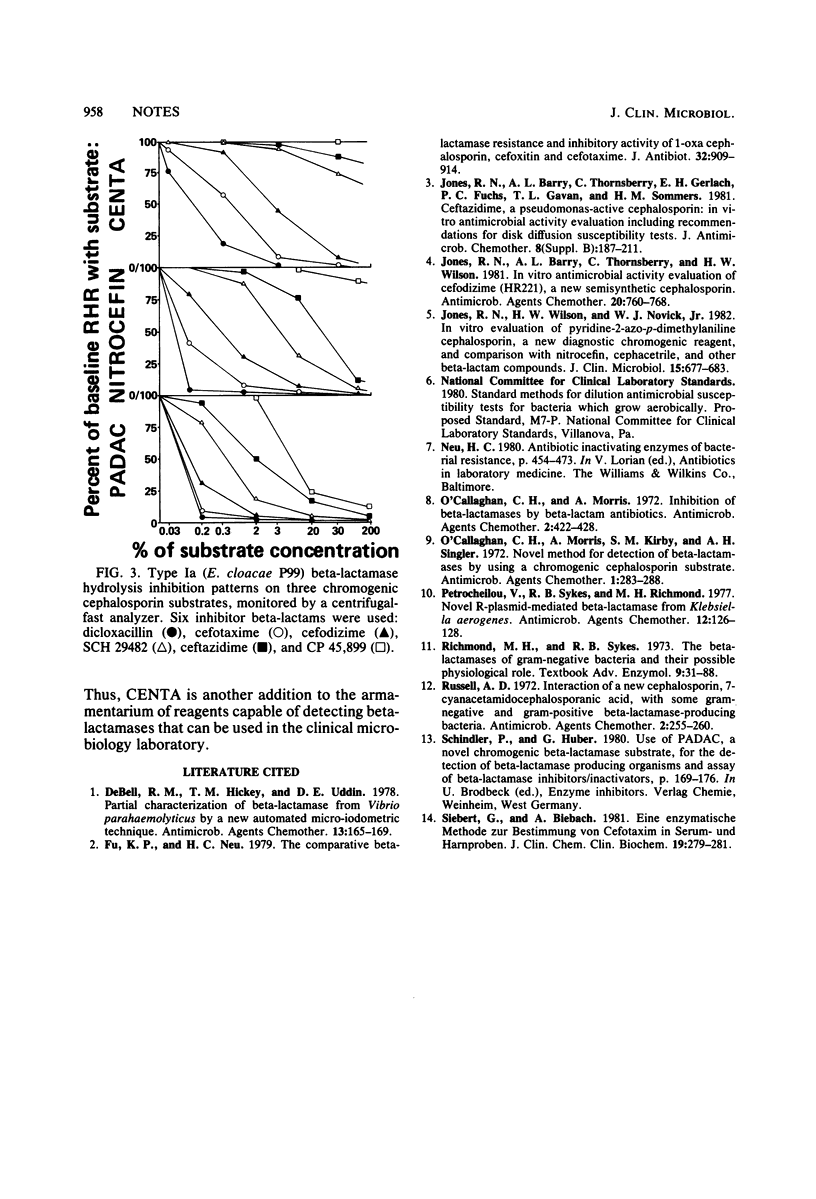
Selected References
These references are in PubMed. This may not be the complete list of references from this article.
- DeBell R. M., Hickey T. M., Uddin D. E. Partial characterization of a beta-lactamase from Vibrio parahaemolyticus by a new automated microiodometric technique. Antimicrob Agents Chemother. 1978 Feb;13(2):165–169. doi: 10.1128/aac.13.2.165. [DOI] [PMC free article] [PubMed] [Google Scholar]
- Fu K. P., Neu H. C. The comparative beta-lactamase resistance and inhibitory activity of 1-oxa cephalosporin, cefoxitin and cefotaxime. J Antibiot (Tokyo) 1979 Sep;32(9):909–914. doi: 10.7164/antibiotics.32.909. [DOI] [PubMed] [Google Scholar]
- Jones R. N., Barry A. L., Thornsberry C., Wilson H. W. In vitro antimicrobial activity evaluation of cefodizime (HR221), a new semisynthetic cephalosporin. Antimicrob Agents Chemother. 1981 Dec;20(6):760–768. doi: 10.1128/aac.20.6.760. [DOI] [PMC free article] [PubMed] [Google Scholar]
- Jones R. N., Wilson H. W., Novick W. J., Jr In vitro evaluation of pyridine-2-azo-p-dimethylaniline cephalosporin, a new diagnostic chromogenic reagent, and comparison with nitrocefin, cephacetrile, and other beta-lactam compounds. J Clin Microbiol. 1982 Apr;15(4):677–683. doi: 10.1128/jcm.15.4.677-683.1982. [DOI] [PMC free article] [PubMed] [Google Scholar]
- O'Callaghan C. H., Morris A., Kirby S. M., Shingler A. H. Novel method for detection of beta-lactamases by using a chromogenic cephalosporin substrate. Antimicrob Agents Chemother. 1972 Apr;1(4):283–288. doi: 10.1128/aac.1.4.283. [DOI] [PMC free article] [PubMed] [Google Scholar]
- Petrocheilou V., Sykes R. B., Richmond M. H. Novel R-plasmid-mediated beta-lactamase from Klebsiella aerogenes. Antimicrob Agents Chemother. 1977 Jul;12(1):126–128. doi: 10.1128/aac.12.1.126. [DOI] [PMC free article] [PubMed] [Google Scholar]
- Richmond M. H., Sykes R. B. The beta-lactamases of gram-negative bacteria and their possible physiological role. Adv Microb Physiol. 1973;9:31–88. doi: 10.1016/s0065-2911(08)60376-8. [DOI] [PubMed] [Google Scholar]
- Rotimi V. O., Turk D. C. Transferable multiple antibiotic resistance in Haemophilus influenzae. J Antimicrob Chemother. 1981 Sep;8(3):187–192. doi: 10.1093/jac/8.3.187. [DOI] [PubMed] [Google Scholar]
- Russel A. D. Interaction of a new cephalosporin, 7-cyanacetamidocephalosporanic acid, with some gram-negative and gram-positive beta-lactamase-producing bacteria. Antimicrob Agents Chemother. 1972 Oct;2(4):255–260. doi: 10.1128/aac.2.4.255. [DOI] [PMC free article] [PubMed] [Google Scholar]
- Seibert G., Biebach A. Eine enzymatische Methode zur Bestimmung von Cefotaxim in Serum- und Harnproben. J Clin Chem Clin Biochem. 1981 May;19(5):279–281. [PubMed] [Google Scholar]


